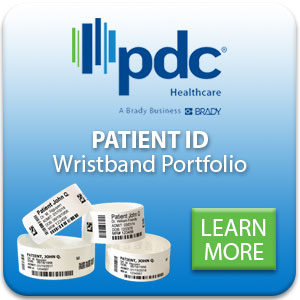Re-posted with permission from PDC Healthcare and edited.
Healthcare Industry Positions for Uncertain Future
The US Healthcare Market is in a struggle for its own future, which has yet to be defined. Will healthcare become more socialized or stay privatized? Will the Affordable Healthcare Act survive or be replaced? Either way, healthcare institutions are scrambling to position themselves for the future. Hospital systems are consolidating.
GPOs are consolidating. Suppliers are consolidating. Everything is getting bigger. What this means is that while the many institutions are becoming fewer, they are being plagued with fragmented practices, processes, and products. As organizations rush to integrate and realize the upsides of consolidation, efficiencies suffer, patient benefits are delayed and savings opportunities are missed.
Health Systems Aim to Improve Efficiencies & Reduce Costs
These integrations are forcing hospitals to look inward at how they are conducting business to better serve their patients as well as to reduce their costs. 98% of hospital supply chain professionals agree that consolidating vendors and standardizing consumables is an important way to achieve cost savings and improve efficiencies for their facilities.
Health systems are working to reduce the number of vendors in an attempt to increase purchase volumes with their primary suppliers and to drive contract compliance in order to receive more favorable pricing. Fewer vendors should also translate into fewer purchase orders, reducing hidden costs, and help to get rid of redundant SKUs for same or similar products, improving efficiencies.
Common Obstacles to Achieving Standardization & Vendor Consolidation
While consolidating vendors and standardizing consumables appears to be a logical strategy from a bird’s eye view, what hospitals often find is that it can prove to be very difficult to implement. Suppliers of easily comparable items, such as infusion pumps, often have contracts with the Health System that can delay any chance at consolidating for several years. Other medical devices, such as surgical instruments, can be a personal item to doctors who work to block any type of change.
Any item with a substantial price tag or any connection to patient outcomes must go through the Value Analysis Team for approval, which means heated debates, risk/benefit analysis, and lengthy trial times. The result is that despite being a major initiative for the health system, cost savings initiatives often fall far short of their budgeted targets.
Standardization of Consumables Offer Quicker Savings
To overcome these types of challenges, many health systems are focusing on their consumable products for savings. Consumable products are present on the GPO contracts but, typically are not bound by contracts held directly with suppliers and manufacturers. And, while these items are small ticket items at the individual level, when you take into consideration the volumes consumed by the entire health system, the savings can be in the hundreds of thousands of dollars. This creates a nice opportunity for the supply chain team to focus their efforts on products that they can have an immediate impact on.
Still, there are challenges which need to be overcome. First, the purchasing team needs to identify suppliers who have a large scope of products. This means that dealing with the smaller suppliers, who may be able to offer a low price on a single item, may appear to be saving the organization money on a specific product but, such fragmented purchasing results in higher prices on other items because of deluded purchasing power.
Second, in order to achieve any critical mass in consumables, you’re likely talking about tens or even hundreds of different SKUs. Taking the time to compare product offerings from multiple vendors, cross SKUs, and consolidate purchasing can be more than a supply chain team is reasonably capable of taking on.
Leveraging Large Suppliers to Lighten the Workload of Standardization
The solution is getting the health system’s major suppliers to do the work of comparing and crossing products for them. Large companies have a good understanding of their competitors’ product offerings and can do the heavy lifting of matching same or similar products and providing the cross SKUs.
The ISG offers over 50,000 products from PDC Healthcare (now part of PDC IDenticard) crossed with its major competitors, even offers a full-service program where its team will conduct a 360-degree analysis on the identification labels and wristbands destined for all departments throughout the hospital (laboratory, pharmacy, main admission, OR, etc.).
The end goal is to consolidate purchasing into a single, GPO-contracted vendor and to standardize the variety of products into as few SKUs as possible. Additionally, analysts review the product specifications to be sure that the health system is buying products that are compliant with current hospital and patient safety regulations.
Quick, Clear Path to Savings
A dedicated standardization program—like the one described above—can provide the health system’s supply chain team with a clear path to realizing significant savings by targeting products they can easily convert without objection, enabling them to truly consolidate vendors and increase contract compliance with their primary GPO over a short period of time.
Contact your local ISG dealer to discuss your current healthcare wristband and label needs. Our on-site service and support are unmatched, and can help you reduce your costs, increase your facilities’ efficiency and improve your patients’ experience. Let us help you do more and spend less by standardizing consumables throughout your healthcare system.
Original article written by Jacob Klatt for Connect ID.


